Being Indigenous means telling stories. From our earliest collective memories, we know that Native people across the world have been creating and drawing our own worlds, both realistic and fantastic. It should come as no surprise that some of the most exciting work in comics today is coming out of Indigenous communities. From Tsalagi magical girls to Yaqui explorations of kink culture, Indigenous comic and zine artists are coming together to break boundaries and reimagine the future of comics. Comics have, without a doubt, sought to include narratives about Indigenous people, but very rarely have they been written by Indigenous people. As the digital world has flattened barriers to entry in all fields, especially comics, Indigenous artists across the United States and Canada have been able to present authentic work that expresses their communities free of appropriation. The message from Indigenous artists across the world is clear: Nothing about us, without us.
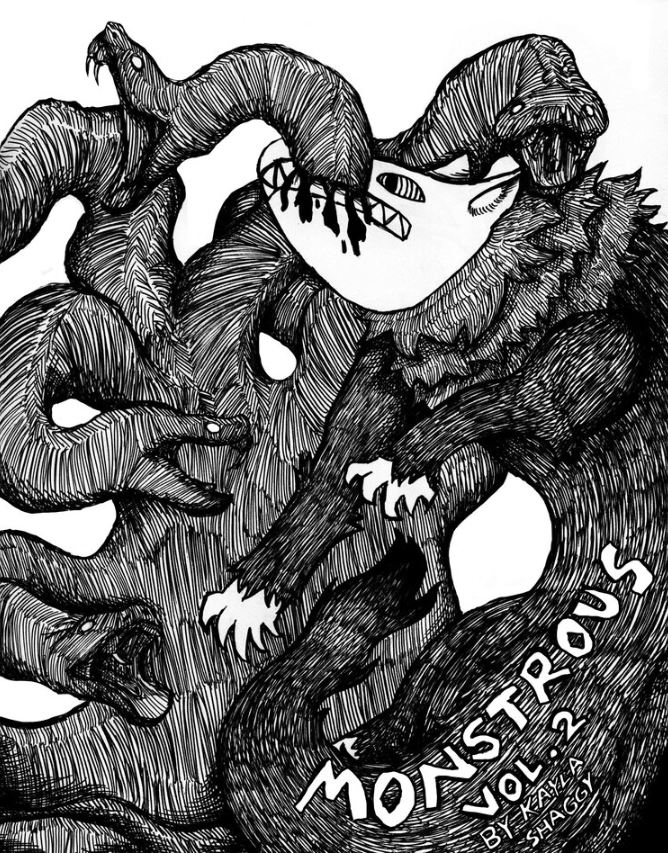
One such artist is Kayla Shaggy, a Diné and Anishinaabe educator and Indigenous comic artist (she/her and they/them pronouns) who uses heavy linework and shadow as a primary element of her art. She has been working in comics since 2017 when she published her first book, titled The Sixth World. Her own work leans toward horror and LGBTQ themes, with horror being an especially good fit for her use of sharp lines and shadow. She would love to see stories like these explored more by both up and coming artists and industry names. While industry norms may make breaking into comics seem impossible, Kayla has found great success through self-publishing and working with like-minded artists with the goal of supporting small comics. Like many Indigenous comics artists, her greatest inspiration comes from her family, but Kayla noted that she also finds the work of Osamu Tezuka and Jeff Smith fascinating. For new artists, she suggests ignoring marketability, saying stories that excite the writer and artist are not just more artistically thrilling, they also will connect with the reader on a much deeper level. But what does she say should be more important than book sales to new comic artists? Taking a lot of breaks! She promises that carpal tunnel is no joke. The Sixth World and other works by Kayla Shaggy can be found at www.kaylashaggy.gallery.
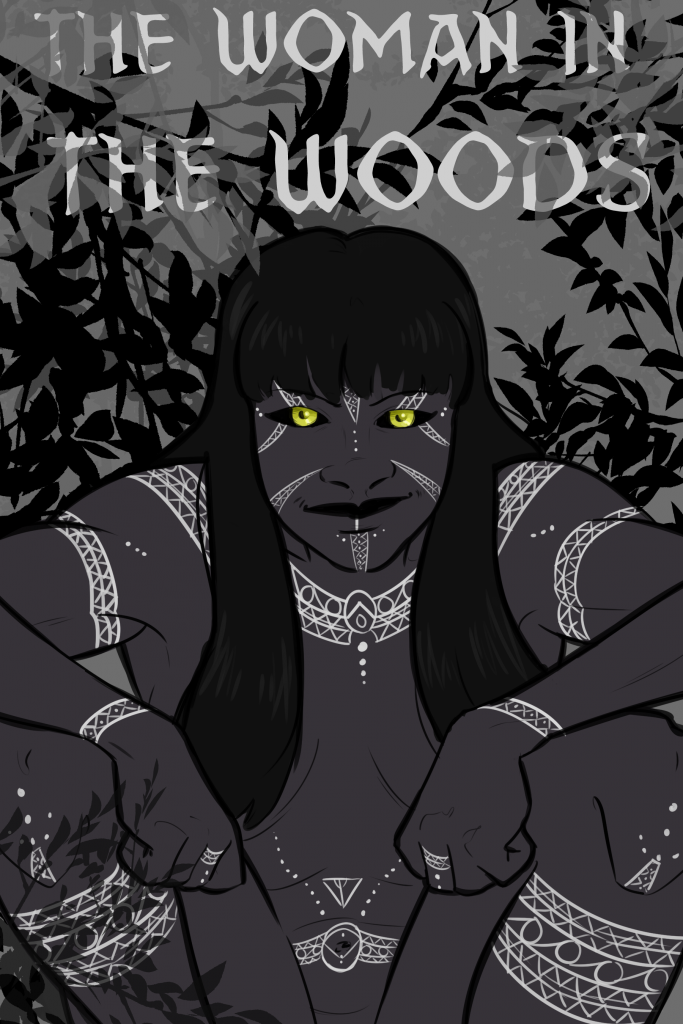
Mercedes “Cibby” Acosta (she/her pronouns) is a Taino artist and game designer with a love for innovative storytelling. Muted tones and expressive linework allow Mercedes’ work to create an evocative mood in every panel. Her work finds inspiration from the expressiveness of Calvin and Hobbes as much as it does the expansive wonder of works by Jean Giraud, informing her work with wide-appeal media intended for both children and adults. Having worked in illustration, comics, and storyboarding, Mercedes has had the opportunity to create media specifically for younger audiences that centers around magical worlds and Indigenous empowerment. She longs for more stories from Indigenous artists that are not laser focused on oppression or struggle with white people, but instead breathe new energy into the fantasy and slice of life genres with Native perspectives. Mercedes also works creating tabletop roleplaying games for all ages, and her work was recently published in the Local Haunts Anthology. You can find her comics at https://www.cibbyacosta.com/, or on Gumroad at https://gumroad.com/angelofmercy.
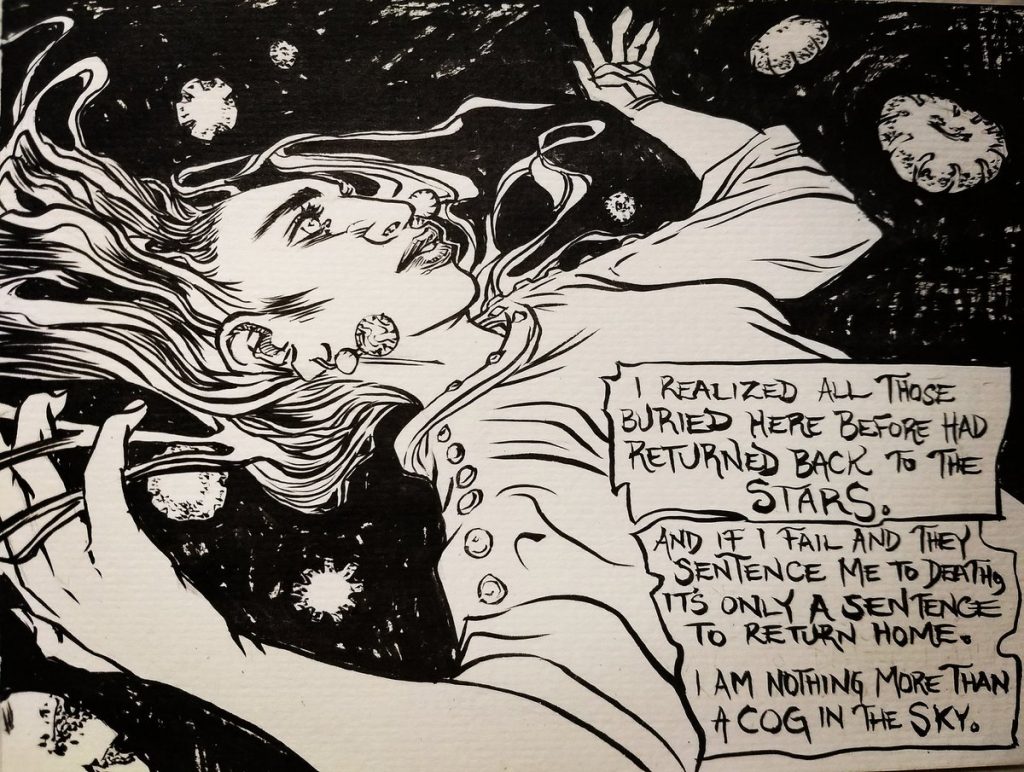
Tongva illustrator and comic artist Weshoyot Alvitre (she/her pronouns) is something of a legend in the Indigenous comics world. She has been working in comics for over fifteen years and has been featured in numerous anthologies of Indigenous work, the Eisner award winning Umbrella Academy, as well as illustration for the NODAPL and Mauna Kea sovereignty movements. Her linework calls to mind pen and paper elements over digital work, mixing realism and self-expression to great effect. Stories, for her, are at the heart of what inspires good comic work. She wishes to see more Native stories told by Native voices in general, but especially oral histories put into book form for current and future generations to access “our experiences in our own words”. She feels that one of the most important gifts that our constantly changing digital world has given to comic artists (especially those from marginalized communities) is the ability to be paid for their work fairly. Weshoyot reminds artists, never, ever work for free! When she first entered the industry, there were no standardized pay rates, but today she finds that equitable pay rates are easy to find. Requiring living wages helps every artist in one’s community, and comics are no different. You can find her work at https://www.weshoyot.com/.
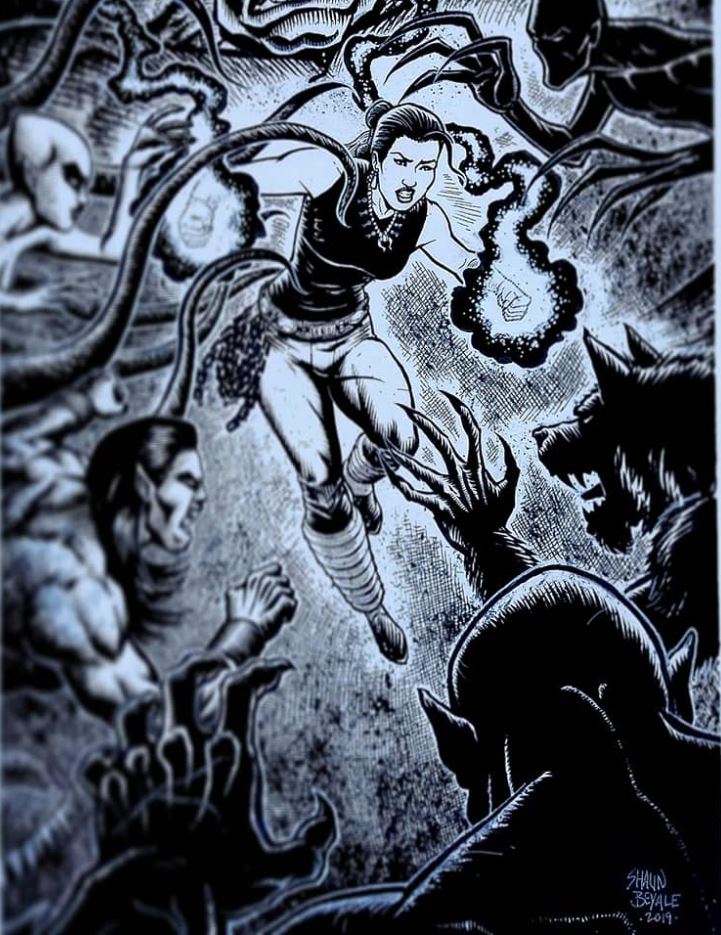
Shaun Beyale (he/him pronouns) is a Diné comic artist from the Navajo nation with a love for strong female characters. He has been working more recently in comics, following his graduation from the Institute of American Indian Arts in New Mexico. His style leans toward heavy lines and a more traditional big three style, very evocative of what many assume superhero comics may look like. Varied media has been vital to Shaun in terms of his development in comics, as he finds inspiration to create from all forms of art, be they oil painting or graffiti. Yet comics are still his first love, a first love with problems in spades. A critique he has for the industry is that big name comics have become too derivative, focusing too harshly on bringing in new readers with surprising twists, but no emphasis on keeping them reading after a few issues. Shaun believes that the best ideas and art are all coming from indie publishers and artists, unfettered by old industry practices. He finds inspiration from apocalyptic media as much as from his family, which constantly inspires him to create strong female characters that represent his matrilineal culture. His work can be found on Facebook at https://www.facebook.com/nativespidey/ or on Instagram at www.instagram.com/shaunbeyale.
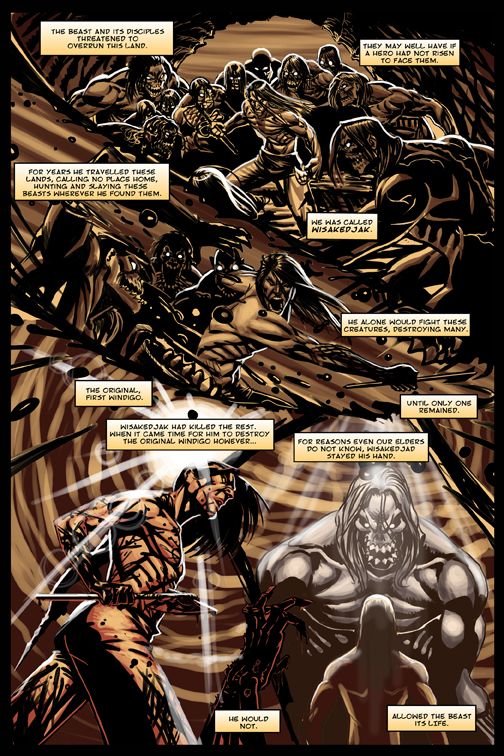
Jay Odjick (he/him pronouns) is another Indigenous comic artist with big questions for the comic book industry. His work reflects his background as an Anishinaabe comic artist of the Kitigan Zibi community, though many know him as a children’s book illustrator and television producer as well. He has been in love with comics for as long as he can remember, and he was at the forefront of the uptick in Indigenous superheros, making his mark before industry giants dusted off old concepts. His work has been an inspiration to many, as Jay was the creator of Kagagi, the first-ever animated Indigenous superhero television series. While his personal work favors more muted palettes and expressive figures, Kagagi’s animated iteration favored full color and simplified characters. Over the years, he has seen the ups and downs of the industry, and Jay is certain that a huge change is coming to comics in these next few months. He noted that industry “dinosaurs,” with their reliance on making comics the way comics have always been made, are on the way out. The current cultural climate requires innovation, and innovators they are not. He believes that as the industry changes, so too do opportunities for Indigenous comic artists to shed light on harder subjects that are often ignored. Over-representation of Indigenous people in prison populations, Missing and Murdered Indigenous Women (MMIW), and other contemporary issues can be handled expertly through comics with the use of metaphor and subtext. On the topic of artists breaking into the industry, he says, “You have a voice that nobody can replicate. If you sing your songs, no one can take that away from you. Emulating is fine, but you must use your own voice and learn to do things your own way. Share the way you look at the world, because no one can see things the way you do. Sing your songs, use your voice, and no one will ever be better at that than you.” Jay’s work can be found on www.kagagi.squarespace.com/, and his new book, Bear For Breakfast launches in stores across the United States April 7th.
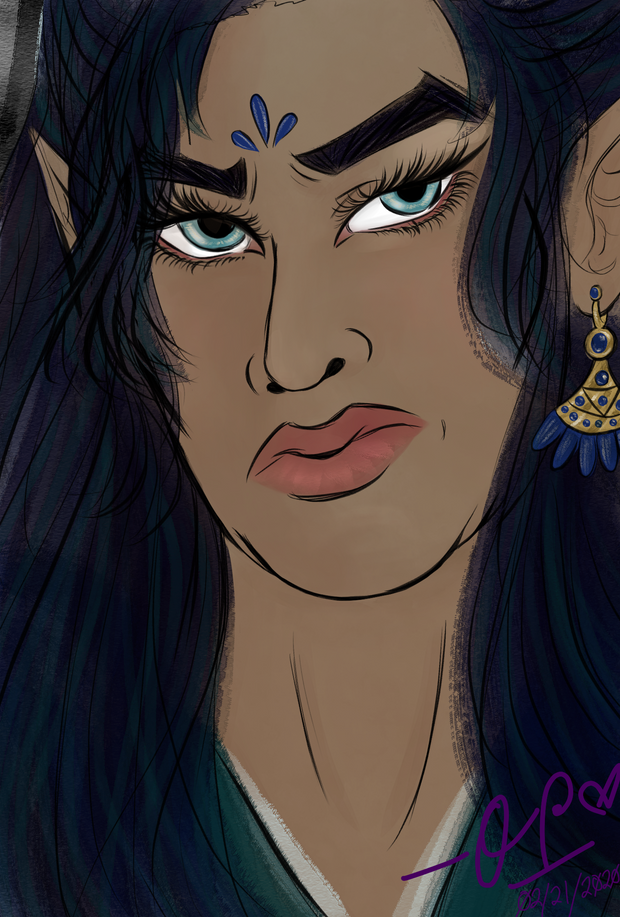
Tsalagi webcomic artist Alihelisdi, also known as Uli (they/them pronouns), is a Two-Spirited person with a passion for comics that do not center on heterosexual relationships. Ringaround, their longest running webcomic, was started four years ago and was spurred on by their hopelessness with electoral politics. Uli’s work is inspired by restorative justice, Indigenous regalia, and contemporary Indigenous art, all of which comes through to great effect in their character designs. Their art utilizes heavy lines and saturated colors, creating a style that matches the intensity of their characters. They try to focus on expanding their horizons in the art field, and not just replacing their own identity and assimilating. Uli longs to see more Indigenous comic anthologies, Native takes on the horror genre, and especially more queer Indigenous romance. They know that there are so many stories to be told beyond mystical savage tropes. One thing they note as a problem for new Indigenous artists is confidence. “So many of us have a tendency to put down our work, especially those of us that come from cultures where boasting is a no-no. As independent artists, and especially as minorities, it is so, so, SO important to not do this. No one else is going to stick up for us, so we have to do it ourselves. It’s not bragging to say you’re confident. You are capable, and to see any success, you have to make it clear to others that you are capable. Don’t undersell your work. Sure, someone else might be selling work cheaper than you, but there is no one else selling your work. Go in saying you’re a pro, act like one, and you’ll be received as one.” You can find Uli’s work at https://tapas.io/MamaPluto and https://www.patreon.com/MamaPluto.
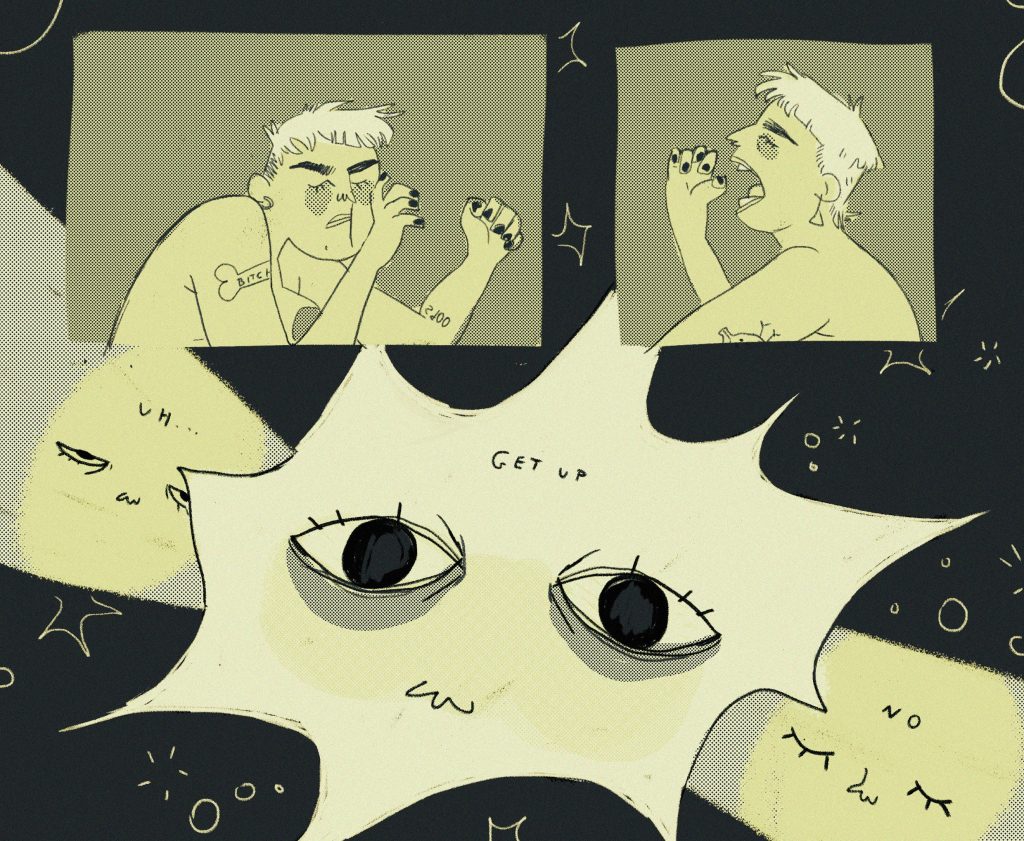
Yaqui and Ojibwe illustrator Maya McKibbin (she/her and they/them pronouns) is a Two-Spirited person who also works in comics and film. Her varied work has a special focus on sharp forms and Indigenous symbolism, as well as a unique take on the aesthetics of gender. She has had the opportunity to work with several groundbreaking studios such as Spotted Fawn Productions, an Indigenous centered stop-motion production company. Maya’s style of illustration makes use of texture and rendering to express touch and connection between figures, concepts, and more. Her zines and comic work interrogate sex and sexuality for Indigiqueer people. As a Two-Spirited person, she enjoys creating stories that disrupt and question the impositions and absurdities that gender binaries place on people. Sex and sexuality are rife with trauma and guilt for anyone who dares to stop toeing the line of gender binaries, but this is true especially for Indigenous people. Her work can be found at https://gumroad.com/mkchibs, with the rest of her portfolio available at http://www.mkchibs.com/.
Now more than ever, in times of strife and struggle, people across the world are looking for stories of change and hope. Indigenous artists have those stories to tell, as well as stories of joy, family, and community. Our stories have been passed down despite traumatic events, and the current state of the world vibrates with that raw familiarity, the knowledge that there is change coming. Stories are not just about escape, but knowing one’s self and moving beyond words like “illogical” and “impossible.” That change starts in the imagination first. Indigenous comic artists around the world are making space for readers to imagine a better world. We hope you can imagine that world with us, and help us support each other on the journey to something better.
SOLRAD is made possible by the generous donations of readers like you. Support our Patreon campaign, or make a tax-deductible donation to our publisher, Fieldmouse Press, today.

Leave a Reply